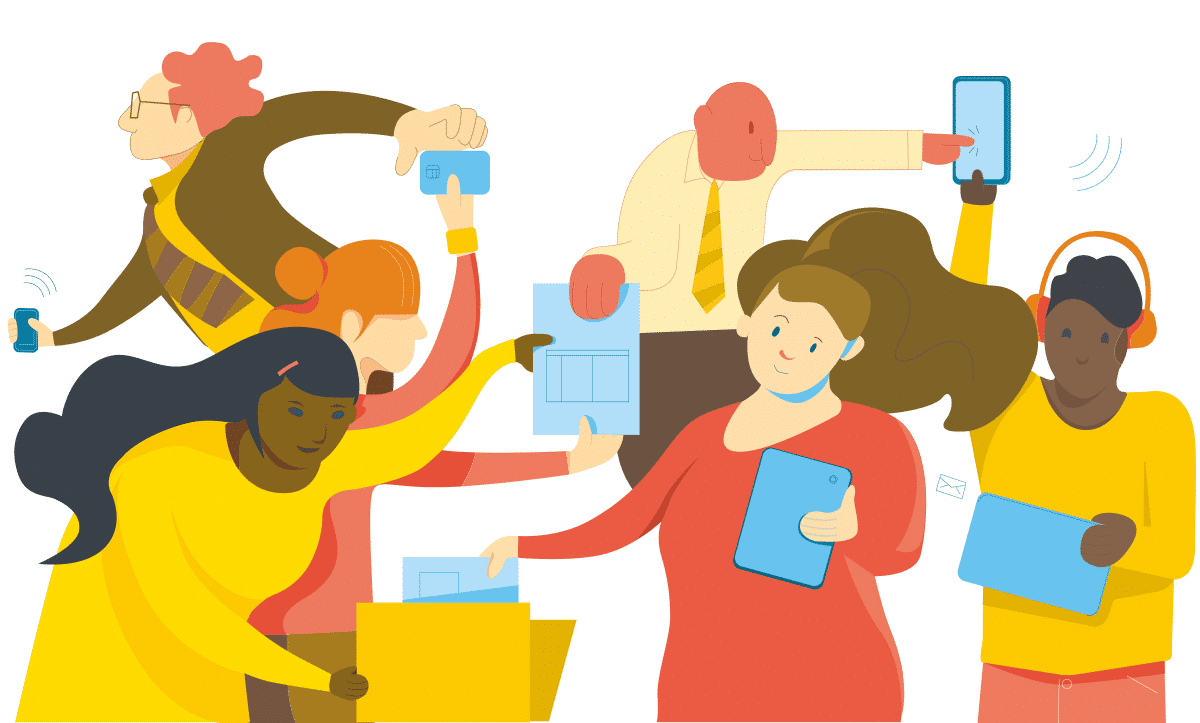A shared services model – the next evolution of ESM

Has your organization bought into the concept of Enterprise Service Management (ESM) yet? Maybe you’re already reaping some of the benefits. Perhaps you digitally transformed your organization’s HR operations, or maybe you introduced an enterprise-wide self-service portal that caters to your employees’ needs.
But there’s more you can do to improve your organization’s back-office business functions. One opportunity is changing your organizational structure to create a single support provider for employees. It’s the creation of a shared services organization based on a shared services model.
The shared services model explained
If you’re as old as I am, you’ll remember the classic centralization versus decentralization debate – is it better to have one centralized, organization-wide IT department or to have separate, decentralized IT teams within each individual department (HR having its own IT team, for example)? Eventually, centralization emerged as the best way to deliver high-quality services and support at the best possible cost.
The shared services model is a further extension of the centralized model – this time, consolidating various business function support capabilities into a single organization-wide support entity. This could include HR (and payroll), facilities, finance, IT, legal services, governance, risk, and compliance (GRC) teams, procurement, security, and other business function support capabilities that serve the whole organization. A shared services organization has the following benefits:
- Easier service accessibility, greater service consistency, and a better employee experience
- Operational efficiencies and associated cost reductions
- Improved knowledge sharing, management, and exploitation
- Better operational insight into performance and improvement opportunities
Most importantly, shared services allow your organization to build its service and support capabilities around employee wants and needs – and not those of the individual service providers as has been the case historically. This simplification of support benefits both employee productivity and business outcomes.
Shared services allow your organization to build its service and support capabilities around employee wants and needs – and not those of individual service providers.
Not all shared services organizations are the same
As with many things in life, there’s no “one-size-fits-all” shared services model. Different organizations have different wants, needs, and capabilities that influence how they implement a shared services model.
For example, some organizations simply want their various business functions to be more closely aligned. As a result, this type of model will create a loose coupling that improves cross-departmental collaboration. Imagine your HR, facilities, and IT departments working together, rather than in siloes, for the collective good of the employees they all serve.
At the other end of the spectrum is the “consolidated” model where there’s one of everything. In other words, it’s a single organization that reports into a single leadership team, with a single service desk staffed by first-line personnel who can field calls across business function lines. There’s also a single way of dealing with employee requests for help, information, service, and change. It makes life so much easier for employees (as there’s a single point of support), offers economies of scale to organizations, and provides support staff with a greater variety of work and development opportunities.
How to implement a shared services model
Most organizations will take a phased approach to introducing a shared services model. And, in the same way that there’s no “one-size-fits-all” model, there are also different ways to phase the journey to such a model. The most common method is to take an organizational-structure-based approach to change, which includes the following three phases:
1. Business functions start with their separate service and support groups
Each group uses their own tools and processes – with their own telephone number and self-service portal – and they report to their respective departments. Employees have to know which business function to contact for their requests.
2. The co-location of service and support groups
Each business function service and support group still reports to their respective department, but all groups are now co-located in a single service and support centre. Depending on the maturity of the co-located operations, it might already be possible to share workloads across the individual groups to cater to the peaks and troughs that are commonplace in business support.
3. The introduction of a shared services organization
The “walls” between the individual service and support groups are removed. A single shared services organization provides all-encompassing, company-wide employee support. Practices and technologies are agreed upon at an organizational level.
Organizing for a shared services model
As well as processes and technology, there are several other areas that need to be unified when moving to a shared services model. These include:
Leadership
The introduction of a shared services organization replaces the various business function leadership teams with a single leadership structure: the shared services manager. The shared services organization reports to this new leadership team but probably still has dotted line relationships into the original business functions such as HR. After all, the shared service organization is providing a service on behalf of the original business functions – meaning that both direction and performance reporting are needed as a minimum.
Governance
The shared services model requires a common approach to governance. For example, in setting organization-wide objectives and targets (see the performance management bullet below), and in ensuring that everyone agrees on and effectively communicates about roles and responsibilities.
People management
This touches on performance management but also, importantly, it covers the need for a common and effective people recruitment and development model. This is important on two levels. First, service and support staff are no longer limited to handling one single business function area – instead, they deal with employee requests across multiple areas. Second, the shared services organization needs to function more effectively than the individual groups it replaces – so its employees’ capabilities will play a large role in ensuring that this happens.
Performance management
The common approach to performance measurement and management applies on many levels. From governance, through people management, to the identification of improvement opportunities. Plus, of course, it also applies to service performance. Where, if a service level agreement (SLA)-based approach is taken, it will require a consistent, organization-wide, approach, and targets that are now agreed upon by two distinct parties. Not only the original business customers and stakeholders, but also the business functions – such as HR, facilities, and IT – that now have a dotted line into the shared services organization.
Ongoing improvement
Whereas individual business functions identify and address improvement opportunities in isolation, a shared services organization can achieve far more. This is due to its larger scale, the use of a single best-practice approach to continuous improvement, and the removal of duplication of effort. For example, initiatives to increase support staff engagement levels or employee experience.
Bring your services together with TOPdesk
TOPdesk’s Enterprise Service Management software (ESM) lets your service teams join forces and process requests from a single platform. With your services united, you’ll solve problems faster, communicate better, and offer more value to your customer.
Inspire others, share this blog


